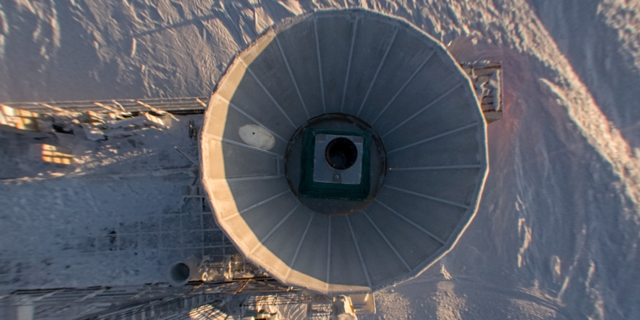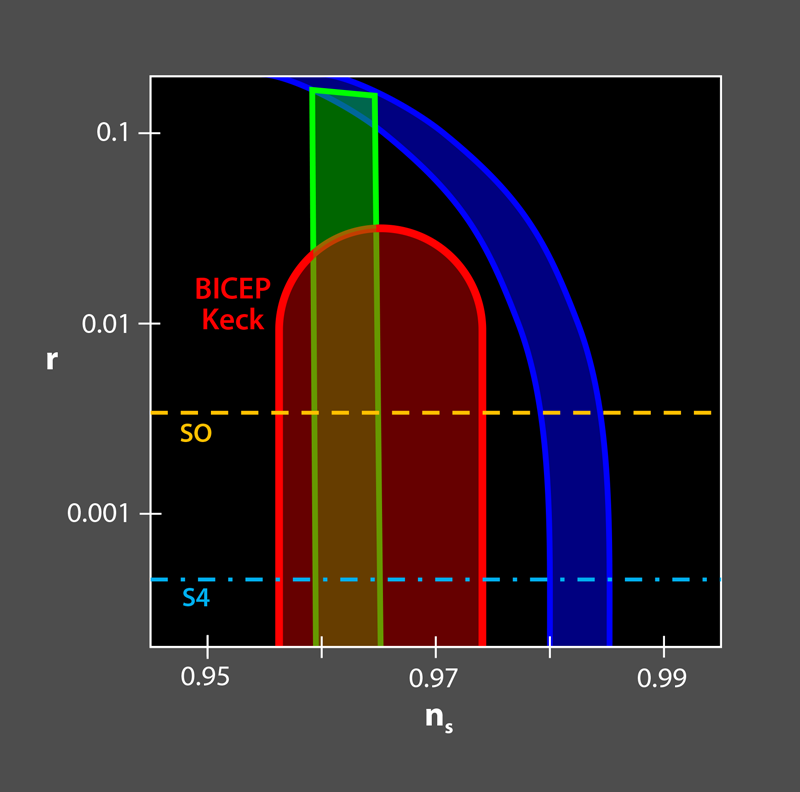'Fog's rollin' in off the East River bank, Like a shroud it covers Bleeker Street, Fills the alleys where men sleep, Hides the shepherd from the sheep.'
sábado, 30 de outubro de 2021
FCT 2021 2022 2023......
quarta-feira, 20 de outubro de 2021
Estudar mais ainda compensa para os jovens de hoje, mas ...
RJIES: 14(5) > 5 ...
| |||||
| |||||
|
segunda-feira, 4 de outubro de 2021
This is going to get very VERY excting! Squeezing down the Theory Space for Cosmic Inflation
Squeezing down the Theory Space for Cosmic Inflation
- Faculty of Science and Engineering, University of Groningen, Groningen, Netherlands
Remarkably, the large-scale Universe can be adequately described by a model involving only a handful of parameters. This lambda cold dark matter (LCDM) model postulates that the expansion of the Universe is driven by the presence of two dark components—dark energy and dark matter—and that the galactic structure we observe today was sourced by small density variations in the very early Universe. However, cosmologists expect that these primordial density fluctuations were accompanied by fluctuations in the fabric of spacetime itself. These gravitational waves could be observed through a predicted signal in the cosmic microwave background (CMB). The BICEP/Keck Collaboration, which has been a frontrunner in the search for this illustrious signal, reports on its latest data set, finding no evidence of gravitational waves [1]. The resulting limits push up against model predictions, which suggests that we are either quickly closing in on a detection or that we may soon witness a paradigm shift. In addition, the analysis shows that researchers properly understand the astrophysical contaminants that obscure the search for this relic signature. By reducing uncertainties about this contamination, we should have greater confidence in any future claims of a detection.
A robust detection of relic gravitational waves would confirm that our Universe was likely shaped by a mechanism known as inflation. Inflation was introduced in the early 1980s to solve some of cosmology’s biggest conundrums, and to this day, it is the most widely accepted and plausible theory of the early Universe. If that theory is correct and gravitational waves filled the early Universe, then cosmologists expect a distinct pattern, called B modes, should be imprinted in the CMB [2]. In 2014, the BICEP experiment at the South Pole (Fig. 1) reported possible evidence of B modes, but the signal turned out to be merely a result of dust in our own Galaxy producing CMB-like radiation. While this was a disappointment, it concentrated efforts on the dust problem (see Hunting Season for Primordial Gravitational Waves).
In principle, the CMB and dust can be distinguished because they differ spectrally. Over the years, researchers from the BICEP experiment and a joint project called the Keck Array have developed dust models using data at different frequencies. By removing the estimated dust contribution, the BICEP/Keck Collaboration has been able to place a progressively tightening bound on the gravitational-wave contribution. This bound is typically given in terms of the tensor-to-scalar ratio
Before commenting on the theoretical implications of this new upper limit, it is important to note how promising the latest analysis is for detecting a signal in the future. Since the foregrounds are the limiting factor to detection, accurate dust modeling is critical. Dust models are primarily based on high-frequency observations by the Planck satellite (the 353-GHz data to be precise). Dust becomes less important at lower frequencies, but for a small tensor-to-scalar ratio
These experimental efforts on dust removal are paying off, as the new bounds on the tensor-to-scalar ratio are having an impact on inflationary models. Different inflation models make different predictions for
So, some inflation models remain viable, but most of the popular models predict
References
- P. A. R. Ade et al. (BICEP/Keck Collaboration), “Improved constraints on primordial gravitational waves using Planck, WMAP, and BICEP/Keck observations through the 2018 observing season,” Phys. Rev. Lett. 127, 151301 (2021).
- M. Kamionkowski et al., “A Probe of Primordial Gravity Waves and Vorticity,” Phys. Rev. Lett. 78, 2058 (1997).
- P. A. R. Ade et al. (Planck Collaboration), “Planck 2013 results. XXII. Constraints on inflation,” Astron. Astrophys. 571, A22 (2014).
- P. A. R. Ade et al. (Keck Array and BICEP2 Collaborations), “Improved constraints on cosmology and foregrounds from BICEP2 and Keck Array cosmic microwave background data with inclusion of 95 GHz band,” Phys. Rev. Lett. 116, 031302 (2016).
- P. A. R. Ade et al. (Keck Array and BICEP2 Collaborations), “Constraints on primordial gravitational waves using Planck , WMAP, and new BICEP2/Keck observations through the 2015 season,” Phys. Rev. Lett. 121, 221301 (2018).
- V. Mukhanov, “Quantum cosmological perturbations: predictions and observations,” Eur. Phys. J. C 73, 2486 (2013).
- A. A. Starobinsky, “A new type of isotropic cosmological models without singularity,” Phys. Lett. B 91, 99 (1980).
- J. Khoury et al., “Ekpyrotic universe: Colliding branes and the origin of the hot big bang,” Phys. Rev. D 64, 123522 (2001).






